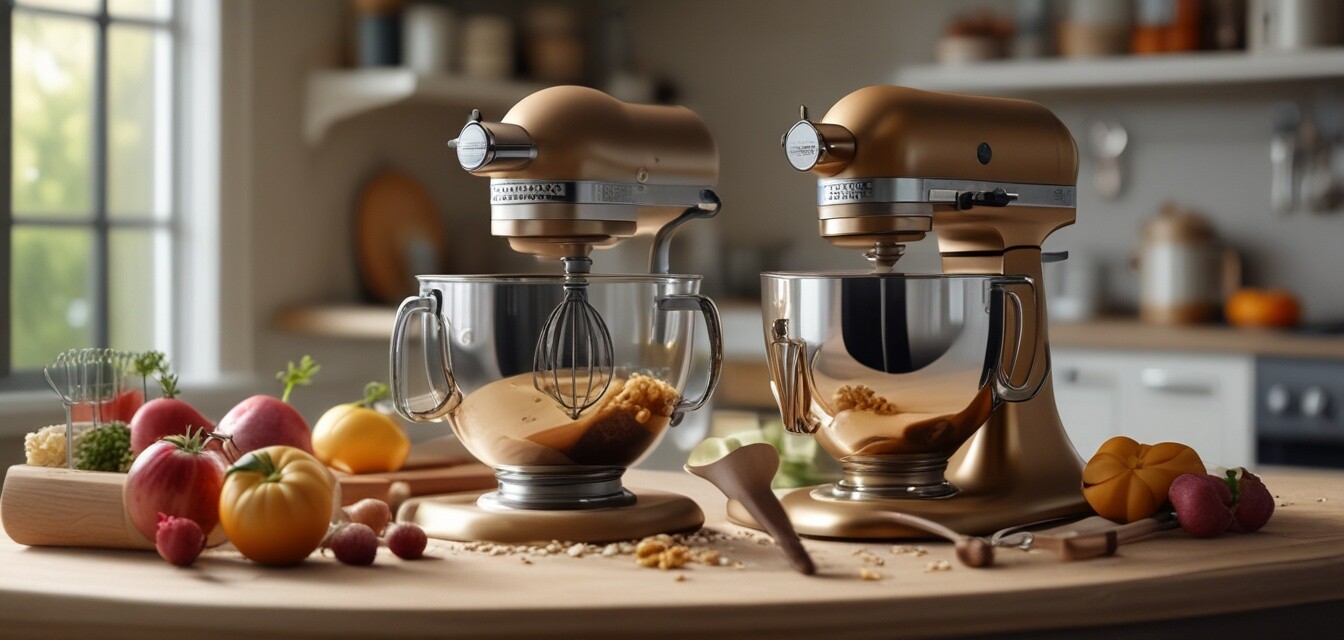
Disclosure: The FTC requires that this article indicate that it was created using AI and is not based on personal experience. It includes affiliate links, which means we may earn a commission if you purchase through these links at no extra cost to you. As Amazon Associates, we earn from qualifying purchases. Product recommendations and endorsements were generated by AI and do not reflect personal opinions or real-world use.
Analyzing the Mixer Market: What’s New in 2025
Key Takeaways
- The mixer market is embracing smart technology and features for enhanced food preparation.
- Commercial-grade mixers are becoming more versatile, tailored for group cooking needs.
- Eco-friendly materials and energy efficiency are driving purchasing decisions in 2025.
- Trends indicate a preference for multi-functional mixers that simplify cooking processes.
As we move towards 2025, the mixer market is undergoing exciting changes that cater specifically to the needs of group cooking. In this article, we dive into the latest developments, features, and trends shaping the future of mixers, especially for those who often prepare meals for gatherings. We will explore innovations in technology, functionality, and design that make cooking for groups simpler and more efficient.
Smart technology in mixers
One of the most significant trends in the mixer market is the integration of smart technology. These advanced mixers offer features such as:
- Wireless connectivity for remote operation.
- Recipe guidance via smartphone or tablet applications.
- Built-in timers and automated settings for consistent results.
Benefits of smart mixers
Smart mixers simplify the cooking process, allowing users to multitask effectively. Imagine mixing dough from another room while prepping ingredients or managing the oven. This convenience is particularly beneficial when you are preparing meals for large groups.
Versatility of commercial-grade mixers
Additionally, commercial-grade mixers continue to adapt to the demands of group cooking. With options like:
- Interchangeable attachments for whisking, kneading, and blending.
- Industrial-strength motors for tougher tasks.
- Larger bowls to accommodate bigger batches.
These mixers are now multi-functional, providing unparalleled versatility. For more insights on choosing the right cooking equipment, check our Buying Guides.
Eco-friendly and energy-efficient designs
As sustainability becomes a priority for many consumers, eco-friendly and energy-efficient mixers are gaining popularity. Key features include:
| Feature | Description |
|---|---|
| Recyclable materials | Mixers made of sustainable components that can be recycled at the end of their lifespan. |
| Energy-saving modes | Settings that reduce power consumption while maintaining performance. |
| Durability | Long-lasting designs that minimize waste and the need for frequent replacements. |
This trend not only appeals to eco-conscious consumers but also aligns with a broader movement towards sustainability in the kitchen. Learn more about the impact of sustainable kitchen products by visiting our page on Latest Trends.
Multi-functionality: The new standard
Another trend is the demand for multi-functionality in kitchen appliances, and mixers are no exception. Today's mixers offer:
- Attachment options for food processing.
- Blending and chopping capabilities.
- Ability to create a wider variety of dishes with one appliance.
By investing in multifunctional mixers, kitchens can save valuable counter space and streamline food preparation. For additional tips on maximizing your kitchen efficiency, check out our Tips and Techniques.
Conclusion
As we approach 2025, the mixer market is evolving to meet the changing needs of cooks who prepare meals for groups. With advancements in smart technology, versatility in commercial-grade mixers, heightened focus on eco-friendliness, and a push towards multifunctional tools, the future of mixology in large cooking contexts looks promising. Stay informed about the latest innovations and adapt your kitchen to ensure you have the best tools at your disposal.
Pros
- Enhanced convenience with smart technology.
- Versatile attachments cater to different cooking needs.
- Focus on sustainability and energy efficiency.
Cons
- Smart technology may increase the cost.
- Not all mixers are suitable for very large batches.
- Learning curve for new features and settings.